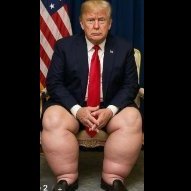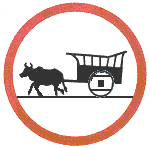China cuts its economic growth target to 6.5-7 percent
-
Recently Browsing 0 members
- No registered users viewing this page.
-
Topics
-
-
Popular Contributors
-
-
Latest posts...
-
169
-
39
THAILAND LIVE Thailand Live Wednesday 20 August 2025
Tensions Flare as Cambodian Soldiers Block ASEAN Observers Photo courtesy of TNA In a dramatic turn of events, members of the ASEAN Interim Observer Team (IOT), hosted by the Royal Thai Army, faced hostility from Cambodian soldiers during a field visit to the Chong An Ma pass in Ubon Ratchathani province on Tuesday. The tension arose amidst allegations of ceasefire violations between Cambodia and Thailand, underscoring the fragile peace in this contentious region. Full Story: https://aseannow.com/topic/1370363-tensions-flare-as-cambodian-soldiers-block-asean-observers/ -
2
Report Thai Masseuse Accuses Employer of Sexual Assault
Another creeper under the delusion that all young Thai women are desperate. -
145
Zelensky v Putin
Not at all. However, Russia is not "every country with nuclear weapons". Russia has the nuclear arsenal to destroy every country in the world, the entire planet, hundred times over. Obviously it would be foolish to equate Serbia or any other non-nuclear country with Russia. And obviously you need to consider whether you want to precipitate a nuclear war with Russia, which is what Biden did and why Biden did not want to put troops on the ground in Ukraine, despite favouring :Ukraine very greatly. No country that is sane would willingly enter into a nuclear war, as it would entail not just MAD, mutually assured destruction, but also potentially the destruction of the entire planet. This does not mean the rule of law does not apply to conventional conflicts, nor does it mean there are no fundamental rights. However, if you seriously think you can arrest Putin and hold him accuntable for crimes against humanity, then perhaps you're not wise to the ways of the world. Nuclear powers can get a away with murder. Israel has recently done so quite blatantly. The US has done so many times. It's just the way of the world. I'm not making these rules, I'm just disclosing them for you. -
0
Thai - Cambodia Conflict Tensions Flare as Cambodian Soldiers Block ASEAN Observers
Photo courtesy of TNA In a dramatic turn of events, members of the ASEAN Interim Observer Team (IOT), hosted by the Royal Thai Army, faced hostility from Cambodian soldiers during a field visit to the Chong An Ma pass in Ubon Ratchathani province on Tuesday. The tension arose amidst allegations of ceasefire violations between Cambodia and Thailand, underscoring the fragile peace in this contentious region. Upon arrival, the delegation—which included representatives from across ASEAN nations such as Brunei, Malaysia, Laos, Indonesia, Myanmar, the Philippines, Singapore, and Vietnam, along with journalists—was met with resistance from Cambodian troops. These soldiers, noted for their agitation, objected to the size of the visiting party, which they claimed included too many officials and journalists. This confrontation prevented the delegation from conducting a comprehensive survey of the area or verifying reports of Cambodian forces cutting barbed-wire fencing—a clear breach of the standing ceasefire agreement, which has eroded trust between the neighbours. The Cambodian soldiers allowed only the observers to approach the Ta-Om monument, while the rest of the entourage, including press members, were restricted to a nearby market. This move by the Cambodian side has been criticised as a significant hindrance to transparency and cooperation. Chong An Ma, a strategically vital region that has seen previous clashes between the two countries, remains under a tense peace, maintained by unarmed troops from both nations. The recent actions of Cambodian forces at this location could further strain relations, as both parties seek to uphold a fragile ceasefire. After leaving Chong An Ma, the IOT continued to Pha Mor E Daeng in Si Sa Ket province. There, they were briefed on a series of ceasefire breaches by Cambodia. The vantage point on the cliff provided the delegation with a clear view of the disputed areas, allowing a better understanding of the ongoing issues. The observers then made their way to Kritsana Base (Phu Makheua) to investigate an unsettling incident from 9 August, where a Thai soldier was injured by a newly planted PMN-2 landmine. This breach of peace highlights the ongoing risks in the border areas, raising concerns over the use of landmines in these tense zones. The IOT's visit aimed to gather firsthand insights into these incidents, but the interference encountered cast a shadow on cooperative efforts necessary for maintaining peace and stability in the region. Tensions along the Thai-Cambodian border continue to simmer, with both nations urged to engage in dialogue to de-escalate the situation and reinforce their commitment to peace. Maintaining stability in ASEAN requires open dialogue and clear efforts to resolve conflicts amicably. As events unfold, the focus remains on encouraging diplomatic channels to address grievances and ensure that peace agreements are respected and sustained. With experts warning that any escalation could have broader implications for regional stability, the coming weeks will be crucial for both countries and their partners within ASEAN. Adapted by ASEAN Now from TNA 2025-08-20 -
48
10 US States May Join Canada?
Yeah, name-calling is always a good strategy. Worked well in kindergarten, so why stop now?
-
-
Popular in The Pub



.thumb.jpg.3ee24d9400fb02605ea21bc13b1bf901.jpg)










.thumb.jpg.bc523c85a8d558dbc282dca7a2e602c9.jpg)

Recommended Posts
Create an account or sign in to comment
You need to be a member in order to leave a comment
Create an account
Sign up for a new account in our community. It's easy!
Register a new accountSign in
Already have an account? Sign in here.
Sign In Now